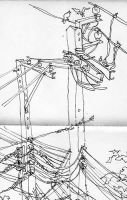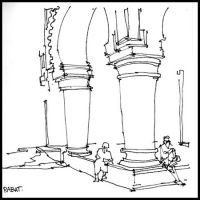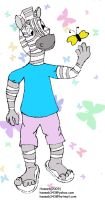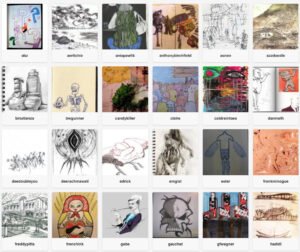Understanding the Impact of Betty Edwards’ Work
If you’re an artist seeking to unlock the intuitive side of your creativity, Betty Edwards Books for Artists deliver some of the most transformative methods in the world of drawing instruction. Blending perceptual training with cognitive principles, her collection of titles continues to resonate with both beginners and professionals who want to break through technical barriers and truly see like an artist.
Few art educators have left as lasting an impression as Betty Edwards. Her books go beyond step-by-step techniques—they rewire your approach to drawing by focusing on perception, observation, and shifting mental states. This brain-based approach has revolutionized how people learn to draw, making her methodology a landmark in modern art education.
Whether you’re picking up a pencil for the first time or looking to breathe life into your sketchbook, Edwards’ methods teach you how to silence your logical mind and awaken your creative potential. At the heart of her teachings is the ability to access the right hemisphere of the brain, which governs visual and spatial awareness.
Drawing on the Right Side of the Brain®
This is the cornerstone of Edwards’ teaching. Originally published in 1979 and revised multiple times since, Drawing on the Right Side of the Brain® redefined art education. Instead of focusing on academic realism or rule-based drawing, it encourages a perceptual shift that helps artists transcend their inner critic.
The book includes foundational lessons on contour drawing, negative space, sighting angles, and understanding light—all wrapped into a process that improves observational accuracy while releasing creative inhibition. Readers often report not just improved art skills but an entirely new way of perceiving the world.
Drawing on the Artist Within
Published in 1986, this title expands on her original thesis and dives deeper into the internal creative process. Drawing on the Artist Within emphasizes that artistic ability is not a gift for the few, but a trainable mindset.
Through practical strategies and deeply reflective guidance, Edwards helps readers explore themes such as visual thinking, expressive drawing, and confidence-building. It’s a powerful tool for artists who feel creatively blocked or overwhelmed by perfectionism.
Drawing on the Right Side of the Brain® Workbook
Serving as a companion to the original book, this workbook (first released in 1998 and revised in 2012) includes structured, hands-on exercises that reinforce the perceptual techniques outlined in the main volume. With guided practice, artists can solidify concepts like perspective, facial proportion, and compositional awareness.
The workbook is perfect for classroom use or self-guided improvement and helps bridge the gap between theory and application. It’s one of the best ways to actively practice seeing through the eyes of an artist.
Color: A Course in Mastering the Art of Mixing Colors
Color theory can be elusive, but in her 2004 title, Edwards brings the same perceptual clarity to chromatics as she did to line and form. This book demystifies color relationships by introducing a structured approach to mixing hues and understanding harmony.
Perfect for painters, designers, and illustrators, Color dives into the emotional and perceptual dimensions of hue, value, and saturation, helping readers develop a more instinctual feel for color through thoughtful practice.
Drawing on the Dominant Eye
Her most recent work, released in 2020, pushes boundaries even further. In Drawing on the Dominant Eye, Edwards explores how one’s dominant eye affects composition, perspective, and drawing accuracy. This fascinating addition to her catalog offers a fresh lens—quite literally—on visual awareness and how physical sight impacts artistic interpretation.
By helping readers determine their dominant eye and adjust their technique accordingly, this book uncovers subtleties that influence how we translate three-dimensional space to a flat page.

Sketchbooks.org | SUBJECT MATTER
Use Your Own Houseplants as Sketch Inspiration
Ignite Your Sketchbook Creativity Houseplants are more than just greenery—they’re an endless source of artistic inspiration! If you're looking for fresh ideas to fuel your sketchbook inspiration, your houseplants can provide intricate patterns, organic shapes,...
Why Betty Edwards Books Remain Essential for Artists
The enduring appeal of Betty Edwards books lies in their power to shift perception. Instead of offering rote memorization or formulaic techniques, her lessons ask you to see the world as it truly is. This perspective-altering effect is what so many artists cite when describing their breakthrough moments.
Whether you’re developing pencil drawing techniques, tackling facial structure, mastering sketchbook practice, or exploring color theory, her books provide clear, actionable insights grounded in both art and cognition.
A Valuable Online Resource
For readers eager to dive deeper, Betty Edwards’ official website, DrawRight.com, is a hub of information, workshops, and resources. It offers updates on book editions, teaching guides, class announcements, and supplemental material for self-study. Anyone serious about growing as an artist will find this site an invaluable companion.
Frequently Asked Questions
What is the best book to start with?
Drawing on the Right Side of the Brain® is the most comprehensive introduction and is ideal for beginners.
Are Betty Edwards’ methods good for self-teaching?
Yes, her books are structured for individual learning, with practical exercises and step-by-step development.
Do I need artistic experience to benefit from these books?
Not at all—her approach is designed for everyone, regardless of prior experience.
Is the workbook necessary if I have the main book?
The workbook adds valuable hands-on exercises but is not required; it simply deepens the learning.
Which book covers color theory?
Color: A Course in Mastering the Art of Mixing Colors focuses entirely on color relationships and practice.
How long does it take to see improvement?
Many readers notice progress in a matter of days or weeks, depending on consistency.
Can these methods improve painting skills?
Yes, the perceptual skills transfer well to painting, especially in areas like proportion and color.
What makes her method different from traditional drawing books?
Edwards focuses on how we see, not just how we draw, which leads to deeper skill development.
Is Drawing on the Dominant Eye useful for advanced artists?
Absolutely—it offers new insights into vision and spatial understanding that benefit all levels.
Final Thoughts
Betty Edwards books continue to transform the way people approach drawing, perception, and creative expression. From foundational exercises to advanced perceptual insights, her collection offers a full-spectrum roadmap to artistic growth. Whether you’re a curious beginner or a seasoned artist, her books teach you not just to draw better—but to see differently.
For anyone ready to deepen their practice and unlock the visual brain, Edwards’ work remains a powerful, enduring guide. Visit DrawRight.com to explore her methods and bring a new depth to your art journey.

Ready to Share Your Work?












I’m a design educator, and I still use exercises from Drawing on the Artist Within in class. They’re timeless.
Memories of High School for me